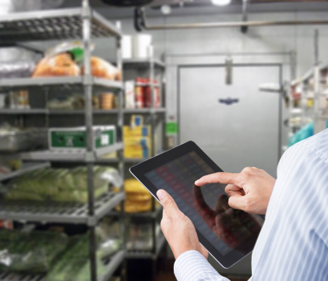
For restaurants, effective inventory management is not just about keeping shelves stocked—it's a crucial aspect of ensuring profitability and customer satisfaction. The ability to prevent losses, avoid overstocking, and eliminate understocking can make or break a restaurant's success. In this blog, we will delve into the importance of inventory management and how it serves as a vital tool in optimizing operations and maximizing profits.
-
Preventing Losses: Accurate inventory management helps prevent unnecessary losses. By closely monitoring inventory levels, tracking expiration dates, and implementing proper storage procedures, you can minimize spoilage, reduce waste, and avoid financial losses. Implementing inventory control measures ensures that you maintain optimal stock levels, preventing both understocking, which leads to dissatisfied customers, and overstocking, which results in wasted resources.
-
Optimal Stock Levels: Maintaining the right amount of inventory is a delicate balancing act. Overstocking ties up capital, increases storage costs, and leads to potential spoilage. Understocking, on the other hand, can result in dissatisfied customers, lost sales, and a tarnished reputation. By leveraging inventory management tools, such as forecasting demand, monitoring sales trends, and analyzing historical data, you can achieve optimal stock levels, ensuring you have enough inventory to meet customer demand without excess waste.
-
Cost Control and Profitability: Effective inventory management directly impacts a restaurant's bottom line. By closely monitoring inventory levels and implementing just-in-time ordering practices, you can minimize carrying costs and free up capital for other business needs. Additionally, accurate inventory data allows you to negotiate better pricing with suppliers and take advantage of volume discounts, further enhancing profitability.
-
Efficient Operations: Streamlining inventory management processes improves overall operational efficiency. By using inventory management software, you can automate data collection, track stock movement, and generate real-time reports. This enables you to identify trends, identify slow-moving items, and make data-driven decisions regarding purchasing and menu planning. Efficient operations translate to reduced labor costs, improved productivity, and better utilization of resources.
-
Enhanced Customer Satisfaction: Inventory management directly impacts the customer experience. By having the right ingredients and products readily available, you can fulfill customer orders promptly, reduce waiting times, and deliver consistent quality. Avoiding out-of-stock situations ensures that customers can order their desired items, leading to higher satisfaction and increased loyalty.
Effective inventory management is a vital aspect of running a successful restaurant. By preventing losses, maintaining optimal stock levels, controlling costs, and improving operational efficiency, you can safeguard your restaurant's profitability and enhance the overall customer experience. Embrace the art of inventory management, leverage technology, and make data-driven decisions to achieve the delicate balance that ensures a thriving restaurant business. With meticulous inventory management, your restaurant can thrive, turning potential losses into greater profitability and customer satisfaction.





